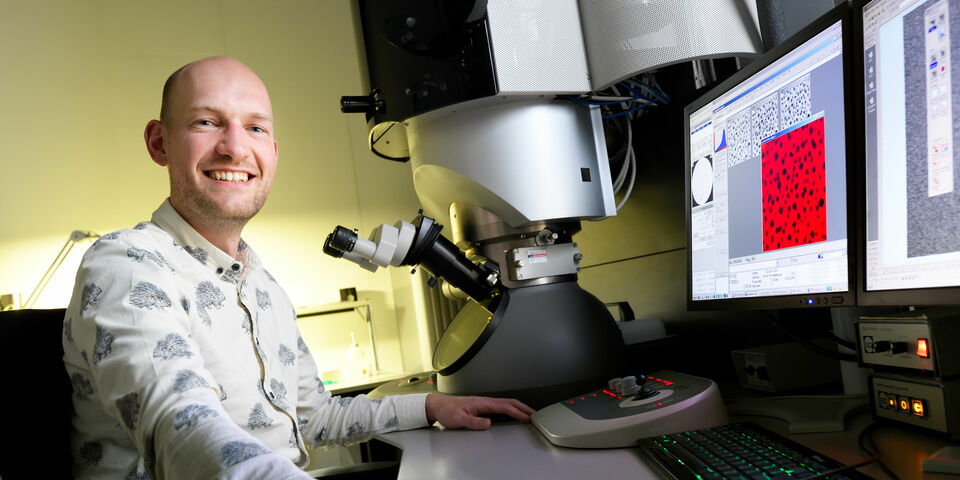Home Stretch | Plastic solar cells under the magnifying glass
Plastic roof tiles, car spoilers or tinted skylights. Thanks to their flexibility - and transparency - plastic solar cells can be installed in various places. Above all, they are easier to produce than regular silicon solar cells. But as their economic life is a fair bit shorter, chemist Zino Leijten studied them under the electron microscope to discover which processes are reducing their efficiency.
More flexible, thinner, lighter, cheaper and easier to make. Thanks to their many advantages, plastic solar cells were a focus of attention in the early years of this century, they even became a hype. But while they were expected to compete with the silicon solar cell, their lower efficiency and shorter lifespan still mean they are not yet a standard option.
Potential
Yet the polymer solar cell certainly has potential, believes Zino Leijten. He has spent years making detailed images of the interior of these solar cells; this week he gains his doctorate at the Department of Chemical Engineering and Chemistry. “We are seeing that polymer solar cells degrade quickly and lose their efficiency. To tackle that, we first have to establish what exactly is going on in the solar cell. Armed with this knowledge we can improve the production process or switch to other materials.”
Plastic solar cells work a little differently than ‘ordinary’ solar cells, Leijten explains. “They consist of a mix of two different materials - a donor and acceptor - often fullerene derivatives. In contrast to ‘normal’ solar cells, in which electricity is generated in a single material - usually silicon, in plastic solar cells electricity is generated at the interface between a donor and an acceptor due to the formation of a electron and a 'hole'. This boundary layer therefore plays a very important role in the efficiency of plastic solar cells. Small changes caused by reactions with, say, water and oxygen in the air can have a big impact on the efficiency.”
Leijten used a special electron microscope technique, Electron Energy Loss Spectroscopy, to study at the nano-scale degradation in that boundary layer in the solar cell. “Directing at high energy an electron bundle through the mix of materials allows us to make the interaction between these electrons and the material visible and, retrospectively, we apply a new calculation method to determine the concentration of oxygen and water in the various materials.”
Degradation process
Working with his samples, Leijten could often be found at the Eindhoven-based electron microscope manufacturer Thermofischer Scientific, where he was able to make use of state-of-the-art equipment. “This also enabled us to look at the optical qualities of the materials during the degradation process. We saw these qualities change even before the solar cell was exposed to UV light, simply in the presence of oxygen and water. Thus it is very important that the plastic solar cells be produced and kept in an oxygen- and water-free environment. Even better, let's develop a new mix of materials that is less sensitive to these factors. What's nice is that our technique is broadly applicable. So these new materials can also be tested extensively.”
After his period of pioneering, in his new role as a postdoc Leijten can now get his new techniques established in his group. In the meantime, he is looking ahead and is keen to contribute to the energy transition. Because all that research is awaiting an application.


Discussion